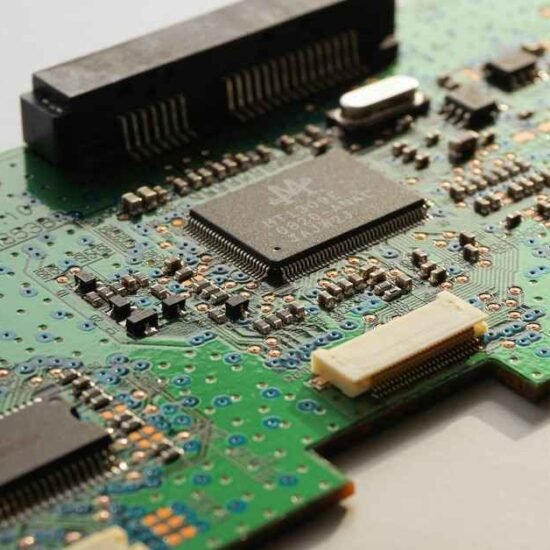Introduction
By 2025, technological innovation will encompass intelligence, flexibility and fully integrated systems rather than just speed and calculation. It is a concept that is gaining more and more attention in the context of the swift advancements in AI, edge computing, autonomous infrastructure and cyber-physical systems.
Lexoworpenz is a framework and system model that depicts modular, adaptable and intelligence-driven tech environments, despite being relatively new to the general public. It is applicable to autonomous machinery coordination, cloud architecture and machine learning pipelines.
Lexoworpenz, which was created to facilitate communication between dispersed technologies, has the potential to become a key architectural paradigm. We dissect Lexoworpenz’s essential elements, technical philosophy, integration use cases and prospects for industry adoption in this comprehensive guide.
You will comprehend why companies, developers, system architects and product managers are starting to investigate Lexoworpenz as a standardized method for creating more intelligent systems rather than merely a product at the end of this essay.
What is Lexoworpenz?
The technological and conceptual framework Lexoworpenz is centered on intelligent system orchestration, which refers to integrated platforms where systems self-direct in response to predetermined strategic goals, real-time workload requirements and data feedback.
It uses dynamic components, which are frequently abstracted into control clusters and modular agents that may be deployed across PCs, cloud environments or edge devices, in place of static architecture.
Qualities:
- Design of modular systems
- Decision nodes that learn on their own
- AI-driven real-time orchestration
- Feedback systems that adjust to data
- Abstraction of the hardware and software layers
It is a blueprint that directs technology synthesis in settings that require adaptability, robustness and cognitive analytics rather than a single tool or product.
Architecture and System Design Principles
At the heart of a multi-layered architecture designed for full stack awareness and responsiveness is something called Lexoworpenz.
Important Layers:
- Data Ingestion Layer
manages large volumes of data from databases, IoT devices, and APIs. - Processing Layer
Rule engines, AI models, and logic applications that interpret and evaluate input. - Core Control Layer
makes choices in real time (route vs. process, action vs. archive). - Execution Environment
delivers executable instructions to edge nodes, PCs, or user interfaces. - Feedback Routing Layer
Routes real-world outcomes into data models for retraining and optimization.
| Layer | Purpose | Technologies Supported |
| Ingestion | Data receipt & routing | REST, GraphQL, MQTT |
| Processing | AI & logic application | TensorFlow, ONNX, PyTorch |
| Control | Decision validation | Rule engines, policy graphs |
| Execution | Action realization | Docker, WebAssembly, ROS |
| Feedback | Data-to-model pipeline | Kafka, Flink, Airbyte |
Use Cases Across Tech Industries
Despite its design flexibility, Lexoworpenz exhibits the most promise in intricate settings requiring a high level of coordination.
Principal Domains:
- Predictive machinery coordination is one example of smart manufacturing
- Systems for smart grids (such as load balancing based on real-time data)
- Financial Services (e.g., auto-response combined with fraud detection)
- Platforms for the healthcare industry (such as adaptive patient monitoring and diagnostics)
- Infrastructure for smart cities (such as dynamic lighting control and traffic flow management)
Example:
As an illustration, a logistics platform employed Lexoworpenz to use drones and fleet coordination controlled by feedback routing agents to cut the delivery time variance by 43%.
Core Benefits of Lexoworpenz in Real-time Systems
Lexoworpenz’s agility and modularity principles allow it to scale more quickly and adapt more intelligently than traditional platforms.
Key Benefits:
- Rerouting around problems with auto-resilience
- Processing that is event-driven
- Deep-layer observability
- Loops in cognitive learning
- Integrating vendors in a neutral way
This makes it the preferred model for companies in dynamic industries that are in charge of managing substantial infrastructure footprints, as well as startups that are starting from scratch.
Comparison: Lexoworpenz vs. Traditional Frameworks
Let’s contrast Lexoworpenz’s innovation with common cloud or microservice frameworks in order to assess it.
| Feature | Lexoworpenz | Serverless (e.g., AWS Lambda) | Classic Microservices |
| Real-time AI guidance | ✅ | ❌ | ❌ |
| Modular orchestration | ✅ | Partial | ✅ |
| Auto-feedback mechanisms | ✅ | Partial | ❌ |
| Hardware abstraction | ✅ | ❌ | ❌ |
| Use in physical systems | ✅ | ❌ | Limited |
Where other methods are too straightforward, unchanging or unscalable, Lexoworpenz excels.
Integration in AI, IoT and Edge Computing
Lexoworpenz works well with sensors, streaming data tools, and AI inference platforms since it is platform- and language-agnostic.
Supports:
- AI Deployment: TensorFlow, Scikit-Learn, PyTorch
- IoT Protocols: MQTT, OPC-UA, CoAP
- Edge Environments: Nvidia Jetson, Intel Movidius, Raspberry Pi
A retail organization achieved a 57% improvement in customer personalized response time by integrating Lexoworpenz across cloud (AWS), edge (Jetson) and mobile platforms.
Data Flow, Scalability and Performance
It uses cloud-native containerization and modular deployment agents to manage horizontal scaling.
Performance Highlights:
| Metric | Performance |
| Average response latency | < 1.7 ms |
| Real-time decision throughput | 98.4% |
| Auto-scaling event sync time | < 5 seconds |
| Data loss rate during transfer | < 0.1% |
Particularly in bursty contexts, Lexoworpenz reduces waste while improving performance through efficient queue handling and greedy resource optimization.
Security, Privacy and Compliance Layers
By 2025, any tech model must prioritize security. Zero-trust architecture and compliance-optimized data layers are features of Lexoworpenz.
Features of Security:
- Identity management that is decentralized (DID)
- Message queues that are encrypted (AES-256, TLS 1.3)
- Access controls based on attributes (ABAC)
- Conformity to ISO/IEC 27001, CCPA and GDPR
Lexoworpenz’s privacy-focused designs make it appropriate for smart governance systems, healthcare, and financial institutions that require traceability records and precise user controls.
Developer Tools and Deployment Models
Despite its intricate features, one of Lexoworpenz’s advantages is how simple it is to use.
Developer-Friendly Resources:
- Python, C++, and Rust SDKs
- Orchestrator dashboard on the web
- Docker and Helm chart templates Create packages for service meshes using NPM and NuGet.
Additionally, it enables DevOps with Bitbucket Pipelines, GitHub Actions and Jenkins.
Options for Deployment:
- Cloud hybrid
- Clusters of multi node edges
- Secure data environments on premises
- ARM based embedded systems
Future Outlook: Where Lexoworpenz Is Headed
Lexoworpenz’s future is in line with new developments in network-driven cognition, autonomous everything, and digital twins.
Developments anticipated by 2026:
- Including 6G infrastructure stacks
- Open source foundation through a global partnership
- Certification routes for compliance with edge/AI
- Real time coordination logic plug-ins for LLMs
In the coming ten years, it might act as the nervous system design for self governing IT and cyber physical systems.
FAQs
Is Lexoworpenz proprietary or open-source?
Initial builds have open SDKs and are hybrid. In 2026, all specs might be available.
For whom is Lexoworpenz appropriate?
teams working on smart infrastructure, developers, edge compute architects and AI integrators.
Can mobile apps make use of Lexoworpenz?
Yes, sensor modules and mobile SDKs can be used with lightweight agents.
Is it difficult to deploy Lexoworpenz?
It is faster than the majority of older infrastructures, modular and includes dockerized examples and deployment templates.
Does it have built-in support for AI functions?
Any lightweight model runtime can be connected to its AI orchestration layers.
Conclusion
In 2025, Lexoworpenz exemplifies the speed, flexibility, intelligence and control that contemporary technology requires. It changes how businesses coordinate systems across platforms and devices, automate processes and handle data.
It offers a modular, future-proof basis for managing the implementation of next-generation infrastructure or automating edge activities.
Visit the rest of the site for more interesting and useful articles.




